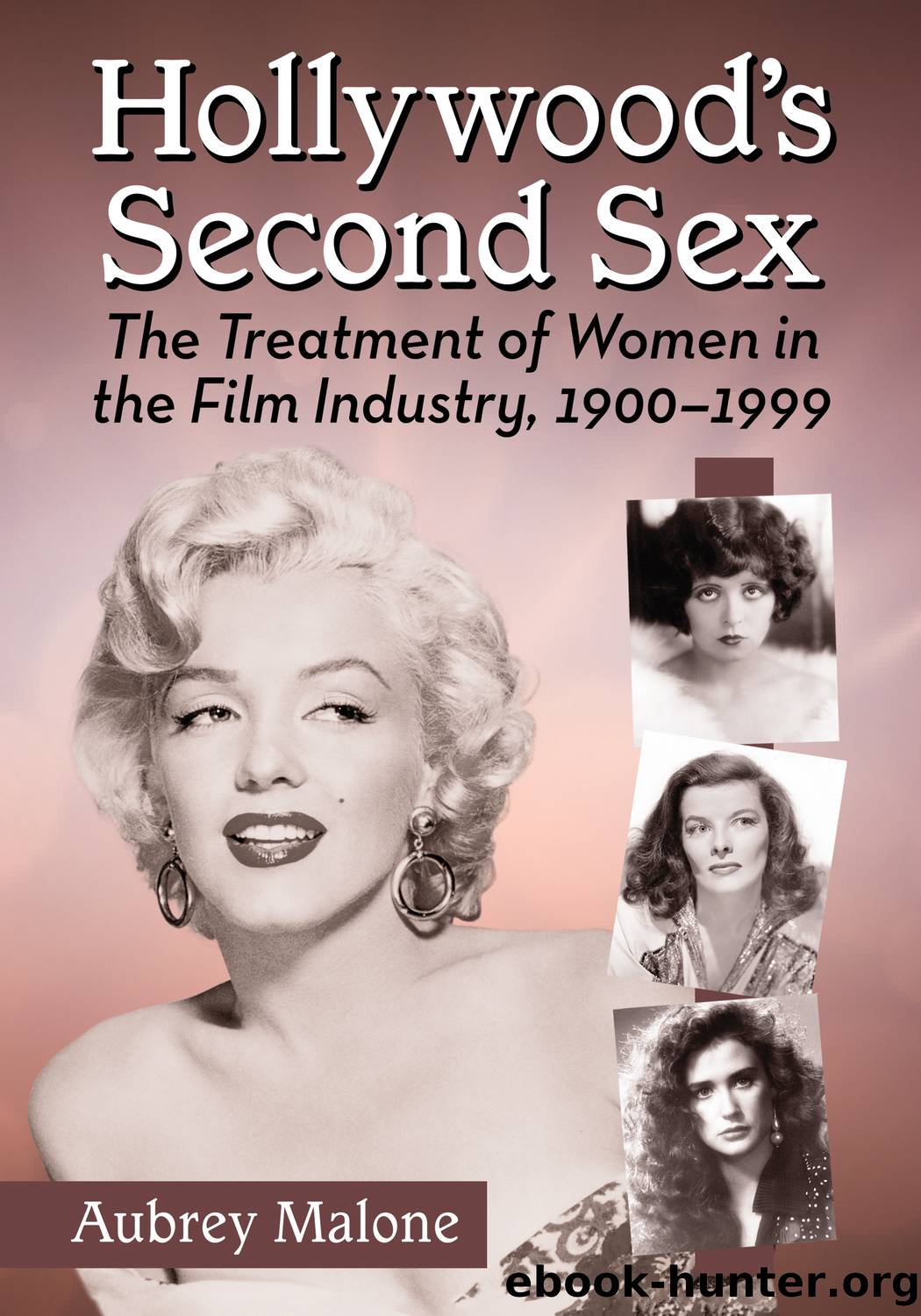Hollywood's Second Sex by Aubrey Malone

Author:Aubrey Malone
Language: eng
Format: epub
Publisher: McFarland & Company, Inc., Publishers
Published: 2015-04-30T00:00:00+00:00
Life After Marilyn
âIt was tough for women to last in films,â wrote Jeanine Basinger. âThose who ran the studios and operated the star machine knew only too well that the beautiful female stars they were manufacturing were going to lose popularity sooner than the males. If a female star could last for a decade she really paid off. If she could last for two decades she was a phenomenon. If she lasted longer than that she was a miracle.â1
Such a woman was Bette Davis, who cheated timeâand studio tyrannyâby reinventing herself. Around the time of Monroeâs death, the consensus in the film industry was that Davis was a busted flush. Her recent films hadnât done much business and her forthcoming, What Ever Happened to Baby Jane? seemed like a desperate leap into gothic excess.
Hollywood had various ways of dealing with aging actresses, as weâve seen. It either put them out on grass, gave them minor parts as mothers and grandmothers, or aunts, or âfriendsâ of the lead. But with Davis, and her Baby Jane co-star Joan Crawford, we witnessed a new phenomenon: The transformation of an aging woman into a monster.
Davis was happy to do whatever it took to make the film a success. She was less vain than Crawford and more willing to reinvent herself if such a transmogrification would revive her career. Sheâd been a chameleon all her life anyway. In this sense she had less to lose than Crawford with Baby Jane, Crawford having molded her image primarily on glamour. âBetteâs best chaperone is her face,â Crawford had rasped once had rasped onceâunfairly, because at her best Davis was a very attractive woman whereas much of Crawfordâs allure came from a bottle or a makeup man. But the makeup men on Baby Jane were going to be her avowed enemies.
Davis was never vain. âI have eyes like a bullfrog,â she confessed, âa neck like an ostrich and limp hair. You just have to be good to survive with that equipment.â2 Especially in an industry dominated by appearance. âHollywood always wanted me to be pretty,â she said, âbut I fought for realism.â3
Baby Jane had a kind of decayed charm, Davis chewing the scenery while Crawford metamorphosed herself from the camp bitch-goddess of the fifties into a decidedly more scary one. But she couldnât match Davis, which served as a reminder that sheâd always lagged behind her in versatility. This was apparent like never before now that they were sharing the screen; there was nowhere to hide. Davis emerged with the Oscar nomination, not Crawford.
Director Robert Aldrich had a tough time raising the budget for Baby Jane. The financiers went, âThose two old bags? Recast this film and weâll give you any amount of money you want.â4 He refused to do this, which meant he had to shoot it on a shoestring. It was made in three weeks.
Because Davis got so little up front, she made a fortune out of the residuals when it became a box office smash.
Download
This site does not store any files on its server. We only index and link to content provided by other sites. Please contact the content providers to delete copyright contents if any and email us, we'll remove relevant links or contents immediately.
Kathy Andrews Collection by Kathy Andrews(11685)
The remains of the day by Kazuo Ishiguro(8753)
Paper Towns by Green John(5028)
Spare by Prince Harry The Duke of Sussex(5001)
The Body: A Guide for Occupants by Bill Bryson(4891)
Industrial Automation from Scratch: A hands-on guide to using sensors, actuators, PLCs, HMIs, and SCADA to automate industrial processes by Olushola Akande(4853)
Machine Learning at Scale with H2O by Gregory Keys | David Whiting(3979)
Be in a Treehouse by Pete Nelson(3880)
Harry Potter and the Goblet Of Fire by J.K. Rowling(3745)
Never by Ken Follett(3710)
Goodbye Paradise(3670)
Into Thin Air by Jon Krakauer(3267)
The Remains of the Day by Kazuo Ishiguro(3258)
The Cellar by Natasha Preston(3224)
The Genius of Japanese Carpentry by Azby Brown(3196)
Fairy Tale by Stephen King(3162)
120 Days of Sodom by Marquis de Sade(3122)
Drawing Shortcuts: Developing Quick Drawing Skills Using Today's Technology by Leggitt Jim(2964)
The Man Who Died Twice by Richard Osman(2961)
